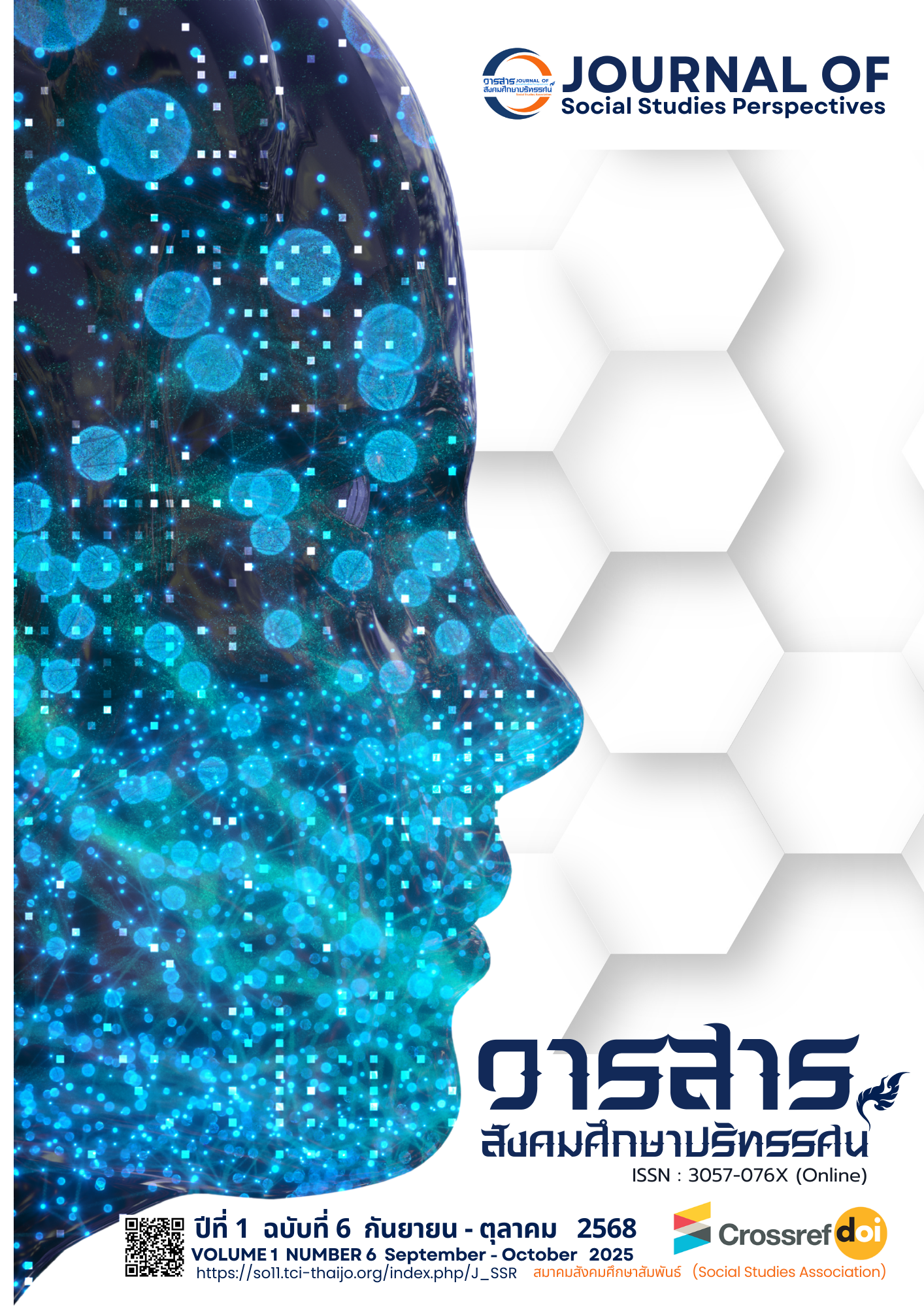KUPRAPACHAI: A CULTURAL HERITAGE REFLECTING ANCIENT CIVILIZATION
DOI:
https://doi.org/10.64186/jsp2427Keywords:
Kuprapachai, Culture, Ancient civilizationAbstract
This academic article aims to study the cultural heritage that reflects the ancient civilization of Ku Praphachai. The objectives are to examine and analyze the historical, architectural, and artistic values, as well as the cultural connections between Ku Praphachai and the ancient Khmer civilization. Ku Praphachai is located within Wat Ban Na Kham Noi, Khon Kaen Province, and was constructed during the reign of King Jayavarman VII of the Khmer Empire in the 18th Buddhist century, using laterite and sandstone as the primary materials. The components of the temple include the central prang, lintels with Khmer patterns, and a Shiva lingam platform that reflect the devaraja (divine kingship) concept and the cosmology of Hinduism. Later, the religious belief transitioned from Hinduism to Mahayana Buddhism, evidenced by the presence of the Bodhisattva Bhaisajyaguru and inscriptions within the prang of Ku Praphachai. The site plays a significant role in the lives of the local community of Ban Na Kham Noi and its surroundings, particularly in the annual Song Ku tradition. Local people participate in religious and cultural rituals, such as paying homage to guardian spirits, offering ritual trays, and performing rocket-launching divination ceremonies, to seek blessings for prosperity and peace for the village. Furthermore, Ku Praphachai serves as a cultural public space symbolically linking the sacred with the everyday lives of the community. This demonstrates that Ku Praphachai is not merely an ancient site of architectural and artistic value but also a spiritual and communal center that embodies shared beliefs and collective memory. Its significance contributes to the preservation and transmission of knowledge to younger generations, exemplifying the sustainable conservation of cultural heritage in a contemporary context.
References
Higham, C. (2001). The civilization of Angkor. London: Phoenix Press. https://ngthai.com/history/51062/angkor-wat/
Kingmuangkao, S., & Buarapha, H. (2015). Arokayasala: Ritual traditions and beliefs in Khon Kaen province. Journal of Human and Social Way of Life, 3(1), 56–78. https://so04.tci-thaijo.org/index.php/wh/article/view/89225/70206
Khon Kaen Link Page. (2018). When in Khon Kaen, don’t miss Ku Praphachai, an important ancient site built during the reign of King Jayavarman VII. Retrieved October 2025, from https://www.khonkaenlink.info/home/news/6732.html
Komsinlapakon. (1999). Archaeological sites in Thailand (Vol. 2). Bangkok: Department of Fine Arts. https://www.finearts.go.th/storage/contents/2021/11/file/6DsahUTNGjoc6zk8PzxrXji028ruxIoUFsqRtTxW.pdf
Komsinlapakon. (1999). Report on excavation and restoration of Prasat Praphachai. Bangkok: Office of Archaeology. https://finearts.go.th/storage/contents/2024/04/file/YBp791m57RYuFvblMwr9WX8E8kcNLXBaFwFQsYQn.pdf
Phumisak, C. (2004). Social history. Bangkok: Fa Diew Kan Publishing. https://minimore.com/b/YBRsi/19
Princess Maha Chakri Sirindhorn Anthropology Centre. (2017). Ritual offerings prepared before the worship ceremony. Retrieved July 13, 2025, from https://rituals.sac.or.th/detail.php?id=110
Santisombat, Y. (2016). Man and culture (3rd ed.). Bangkok: Pimdee Rajabhat Institute. https://www.car.chula.ac.th/display7.php?bib=1944328
Thammarungreung, R. (2005). Khmer temples in Thailand: Historical and artistic background. Bangkok: Matichon. https://elibrary.edupol.org/ebook/64e5d2676f317
Wongphongkham, H. (2023). Architectural styles of religious sites in Khmer civilization in Khon Kaen Province: Towards developing an application to promote cultural tourism. Journal of Local Corporate Management and Innovation, 9(3), 377–393. https://so04.tci-thaijo.org/index.php/jsa-journal/article/view/261557/179272
Downloads
Published
How to Cite
Issue
Section
Categories
License
Copyright (c) 2025 Journal of social studies perspectives

This work is licensed under a Creative Commons Attribution-NonCommercial-NoDerivatives 4.0 International License.
The article is published under the Creative Commons Attribution-NonCommercial-NoDerivatives 4.0 International (CC BY-NC-ND 4.0) license, which allows others to share the article while giving appropriate credit to the author. It prohibits the use of the article for commercial purposes or the creation of derivative works. Any other reuse or reproduction requires permission from the journal.










